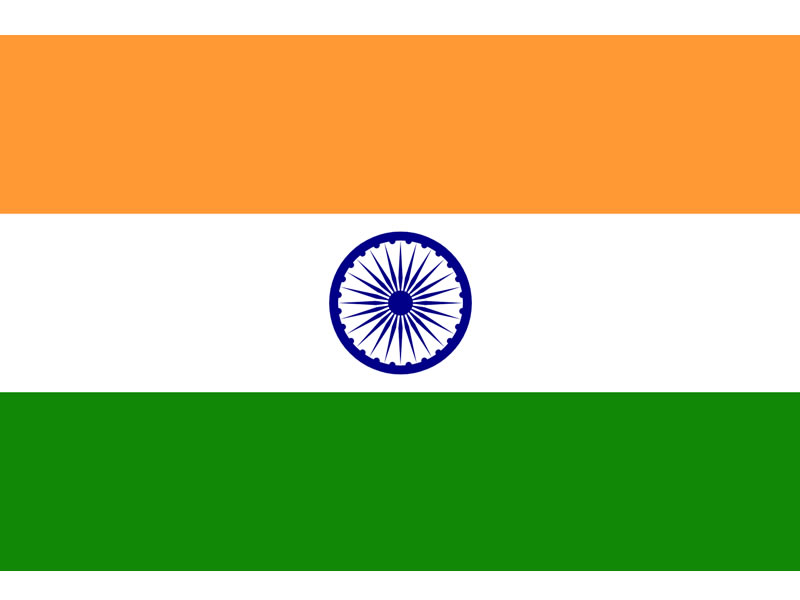Jammu & Kashmir: A year of development
A year since the abrogation or article 370, Jammu & Kashmir is experiencing economic growth and participatory development
Nestled in the pristine valley of Pulwama, Jammu & Kashmir is a bustling garment manufacturing unit churning out thousands of face masks every day. The unit is owned by a young man, Zahoor Ahmad. Mr. Ahmad along with other youth employed in his factory are beneficiaries of Prime Minister’s Employment Generation Programme (PMEGP).
PMEGP is one of the flagship programmes launched in J&K after the abrogation of Article 370, a year ago. It is a credit-linked subsidy programme aimed at generating self-employment opportunities for traditional artisans and unemployed youth through the establishment of micro-enterprises. Under the scheme, many young enterprising individuals like Zahoor Ahmad have been able borrow loans and setup factories and even generate employment for others. As analysts look back upon the one year since the abrogation of article 370, it is clear that this economic vibrancy, deepening of democratic principles and focused development has been its hallmark.
Tapping the potential of the youth
J&K, like much of India has a large youthful population. This population has been the beneficiary of a renewed attention given to education, employment opportunities and entrepreneurship in the last year. 50 new educational institutions offering 25,000 seats, 7 new medical colleges with 1,400 extra medical/ paramedical seats, 5 new nursing colleges and one state cancer institute have been established in J&K. The plan to establish 2 new All India Institute of Medical Sciences in J&K has also given a fillip to medical education.
During the course of the year, 5 lakh students from J&K have availed government scholarship schemes for education. This renewed energy in the education sector flows from the extension of the ‘Right to Education’ provided under article 21A of the Indian constitution to J&K. This application of the article 21A is a natural consequence of the abrogation of article 370. Today, every child born in J&K enjoys the same fundamental right to education, guaranteed by the constitution as children in the other states of India.
Boosting the employability and entrepreneurship opportunities of the youth are 2 new IT parks that are being established in J&K. Moreover INR 1.2 crore sanctioned to 12 promising start-ups for research, development and marketing under the start-up policy is helping them break ground in innovation. These along with the 2 centers for invention, innovation, incubation and training (CIIIT) and partnerships with IITs (Indian Institutes of Technology) and IISER (Indian Institutes of Science Education and Research) are sure to channel the boundless energy of the youth to productive enterprises, especially in the start-up and IT segment. India already has an ecosystem of start-ups, venture capitalists and angel funds that have spear-headed the growth of the IT industry. It will not be long before Srinagar joins the rank of cities like Bengaluru to define and co-create future technology.
Moving along the path of development with accountability
Enacting laws in consonance with the demands of the times is one of the charters of a country or state’s legislative bodies. The Indian constitution from which the fundamental rights and protections of all Indian citizens flow has over the years, enacted many legislation promoting the social, economic and political rights of women, children and the under-privileged. But due to the anomaly created by article 370, the citizens in J&K could not enjoy these rights. However, with the abrogation of the article, positive legislation such as Juvenile Justice (care and protection of children)
Act 2015; Right to Free and compulsory education Act 2009; Protection of women from domestic violence act 2005; Right to Information Act, 2005; etc have become applicable in J&K as well. This has brought much-needed legal support to the citizens of J&K, especially women, children and the disadvantaged.
An immediate result of the extension of these right-enforcing laws has been the enthusiastic participation of the population in the exercise of democracy. In the firstever Block Development council elections held in October 2019, 98% of the voters turned out to elect their council representatives. In an another first, the same elections saw women coming to the forefront of participatory democracy by taking advantage of women’s reservation requirements.
Following these elections, the government launched the ‘Back to Village’ programme. Government officers reached out to every panchayat in J&K to understand the issues at the grassroots. After detailed discussions on the development needs of these villages, 20,000 development works were begun by the government. The success of the scheme is visible in the fact that the people, representatives and administrative bodies have together completed over 7000 of these development works already. This
and other steps taken to strengthen the Panchayats such as increased fund support, grievance redressal mechanisms in the nature of complaint-boxes in front of every panchayat, etc has reinvigorated the local bodies and people’s participation. It is no wonder that panchayats in J&K won 3 national awards for outstanding contribution by Panchayati Raj institutions in April 2020.
Transforming the economic landscape
The J&K government, cognizant of J&K’s latent manufacturing and industrial potential is set to hold its first Global Investors Summit. While Covid19 has delayed it a bit, the interest of the investor community was visible in the pre-summit held in New Delhi and investment roadshows held in Bengaluru, Kolkata and other cities. 168 MOUs worth over INR 13600 Crore were inked in these events. With the government providing an enabling policy and regulatory environment, prominent industry groups are surely looking at the potentials of this beautiful region and its hard-working people. 14 sectors including entertainment, tourism, manufacturing, food processing, etc have gained significant attention.
This private industry interest is supported by the renewed attention given to completing infrastructure projects and smart city development. The cities of Jammu and Srinagar are set to be transformed into modern, sustainable smart cities under a INR 7000 Crore package. A light rail transit system, housing and township policies are part of this drive to develop these cities. While the cities are becoming engines of growth, the villages are also undergoing a quiet transformation. For the first time in 70 years, electricity has reached over 3 lakh households in the remote regions of J&K. The Jal Jeevan mission has extended water tap connections to nearly 3 lakh households and is fast-approaching its target of 100% coverage by 2022.
J&K, home to the much sought after Kashmiri saffron has received its Geographical indication (GI) tag. The GI tag, along with the setting up of the International Kashmiri Saffron Trading Center in Pampore (J&K), under the National Saffron Mission brings immense benefits to the farmers through better processes for collection, packaging, marketing of their products. J&K farmers have also been integrated to the e-National
Agriculture Market (e-NAM). This improved access to the national and international market is bringing dividends to the farmers. Kashmiri products including its apples and saffron will soon find its way to dining tables all across the world.
J&K’s stellar response to Covid19
Even before Covid19 arrived, J&K’s health sector was on a drive to provide health coverage to its citizens. Before the launch of Ayushman Bharat Pradhan Mantri Jan Arogya Yojana (India’s national health coverage scheme), no similar scheme existed in J&K. Even in the first days of its launch, it was evident that there was an immense demand for such health assurance. In the first 90 days of the launch of the Arogya Yojana, 10 lakh health cards were issued giving its holders financial protection for their medical needs.
The health infrastructure of J&K has also since, responded with focused attention to the Covid19 situation. With around 44,744 tests conducted per million, the union territory is one of the top-performers in India. This testing rate is also four times India’s national average. With 17 dedicated Covid19 hospitals, 20,000 ICUs and over 60,000 new beds, J&K has been tackling Covid19 ably. 16 of its districts were identified by the central government as districts with best practices in early response, contact tracing and adoption of IT for pandemic response.
Looking forward
The one year since the abrogation of article 370 has opened up new opportunities for the people of J&K. Economically, it has connected them to the vast domestic and international markets and it has brought in investments to boost manufacturing and industries. Better education and employment opportunities are helping the youth realize their full potential and become drivers of J&K’s growth story. This aspirational dynamic of J&K is strengthened by the extension of affirmative and positive legislation supporting the under-privileged, the women and the children. Participatory democracy is bringing development to local communities. Gone are the days where inimical inspirers of terror would try to wean away the youth to destructive acts of violence. J&K and its people are today, well on their way to development and prosperity.
PORTUGUÊS
Jammu e Caxemira: Um ano de desenvolvimento
Um ano desde a revogação do artigo 370, Jammu e Caxemira está passando porcrescimento econômico e desenvolvimento participativo
Alojadas no intocado vale de Pulwama, Jammu e Caxemira é uma agitada unidade de fabricação de roupas, produzindo milhares de máscaras todos os dias. A unidade é de propriedade de um jovem, Zahoor Ahmad. O senhor Ahmad, juntamente com outros jovens empregados em sua fábrica são beneficiários do Programa de Geração de Emprego do Primeiro-Ministro (PMEGP).
- O Programa de Geração de Emprego do Primeiro-Ministro (PMEGP) é um dos principais programas lançados em Jammu e Caxemira após a revogação do Artigo 370, há um ano. É um programa de subsídios ligados ao crédito que objetiva gerar oportunidades de empregos autônomos para artesãos tradicionais e jovens desempregados por meio do estabelecimento de microempresas. Sob esse esquema, muitos jovens empreendedores, indivíduos como Zahoor Ahmad, conseguiram fazer empréstimos e instalaram fábricas e até geraram empregos para outros. Enquanto os analistas relembram um ano desde que houve a revogação do artigo 370, é evidente que essa vibração econômica, com o aprofundamento dos princípios democráticos e o desenvolvimento focado, tem sido sua marca registrada.
Explorando o potencial dos jovens
- Jammu e Caxemira, como grande parte da Índia, tem uma grande população jovem. Essa população tem sido beneficiária de uma atenção renovada dada a educação, oportunidades de emprego e empreendedorismo no último ano. 50 novas instituições de ensino que oferecem 25.000 vagas, 7 novas faculdades de medicina com 1.400 vagas extras para médicos / paramédicos, 5 novas faculdades de enfermagem e um instituto estadual de câncer foram estabelecidos em Jammu e Caxemira. O plano de estabelecer dois novos Institutos de Ciências Médicas da All India em Jammu e Caxemira também deu um impulso à educação médica.
- Durante o curso do ano, 500.000 de estudantes de Jammu e Caxemira aproveitaram esquemas de bolsas de estudos governamentais para educação. Essa energia renovada no setor educacional flui da extensão do “Direito à Educação”, previsto no artigo 21A da constituição indiana a Jammu e Caxemira. Esta aplicação do artigo 21A é uma consequência natural da revogação do artigo 370. Atualmente, toda criança nascida em Jammu e Caxemira goza do mesmo direito fundamental à educação, garantido pela constituição as crianças nos outros estados da Índia.
- Aumentando as oportunidades de empregabilidade e empreendedorismo dos jovens, dois novos parques de TI estão sendo estabelecidos em Jammu e Caxemira. Além disso, 12 milhões de rupias indianas foram sancionadas a 12 startups promissoras para pesquisa, desenvolvimento e marketing sob a política de start-up, que estão ajudando a abrir caminhos para a inovação. Isto, juntamente com os 2 centros de invenção, inovação, incubação e treinamento (CIIIT) e parcerias com IITs (Institutos Indianos de Tecnologia) e IISER (Institutos Indianos de Ensino e Pesquisa em Ciências), certamente canalizarão a energia ilimitada dos jovens para empresas produtivas, especialmente no segmento de start-up e TI. A Índia já possui um ecossistema de startups, capitais de risco e fundos de investimentos que lideraram o crescimento do setor de TI. Não demorará muito para que Srinagar se junte ao ranking de cidades como Bengaluru para definir e cocriar a tecnologia futura.
Seguindo o caminho do desenvolvimento com responsabilidade
- A promulgação de leis em consonância com as demandas da época é um dos estatutos dos órgãos legislativos de um país ou estado. A constituição indiana, da qual decorrem os direitos e proteções fundamentais de todos os cidadãos indianos, decretou muitas leis que promovem os direitos sociais, econômicos e políticos de mulheres, crianças e pessoas carentes ao longo dos anos. Porém, devido à anomalia criada pelo artigo 370, os cidadãos de Jammu e Caxemira não podiam usufruir desses direitos. No entanto, com a revogação do artigo, a legislação positiva como a Lei da Justiça Juvenil (cuidado e proteção das crianças) de 2015; Lei de Direito à Educação Gratuita e Obrigatória de 2009; Lei de Proteção à Mulher contra a Violência Doméstica de 2005; Lei do Direito à Informação, 2005; etc. tornaram-se aplicáveis também em Jammu e Caxemira. Isso trouxe o apoio jurídico muito necessário aos cidadãos de Jammu e Caxemira, especialmente mulheres, crianças e pessoas desfavorecidas.
- Um resultado imediato da extensão dessas leis de aplicação dos direitos foi a participação entusiástica da população no exercício da democracia. Nas primeiras eleições do conselho de Desenvolvimento de Bloco realizadas em outubro de 2019, 98% dos eleitores elegeram seus representantes do conselho. Pela primeira vez, as mesmas eleições viram mulheres chegando à frente dademocracia participativa aproveitando os requisitos reservados às mulheres.
- Depois dessas eleições, o governo lançou o programa ‘Back to Village’ (De volta ao vilarejo). Oficiais do governo procuraram todos os panchayat de Jammu e Caxemira para entender os problemas básicos. Após discussões detalhadas sobre as necessidades de desenvolvimento desses vilarejos, 20.000 trabalhos de desenvolvimento foram iniciados pelo governo. O sucesso do esquema é visível no fato de que pessoas, representantes e órgãos administrativos já concluíram mais de 7000 desses trabalhos de desenvolvimento. Esta e outras medidas tomadas para fortalecer os Panchayats, como o aumento do apoio de fundos, mecanismos de reparação de queixas por meio de caixas de reclamação diante de cada panchayat, etc. revigoraram os órgãos locais e a participação das pessoas. Não é de admirar que os panchayats em Jammu e Caxemira tenham ganhado 3 prêmios nacionais por uma contribuição extraordinária das instituições de Panchayati Raj em abril de 2020.
Transformando o cenário econômico
- O governo de Jammu e Caxemira, conhecedor do potencial latente de manufatura e industrial de Jammu e Caxemira, deve realizar sua primeira Cúpula Global de Investidores. Embora a Covid-19 tenha atrasado um pouco os planos, o interesse da comunidade de investidores foi visível na pré-cúpula realizada em Nova Délhi e nas turnês de investimentos realizados em Bengaluru, Kolkata e outras cidades. 168 Memorandos de Entendimentos (MOUs) no valor de 136 bilhões de rupias indianas foram incluídos nesses eventos. Com o governo fornecendo uma política facilitadora e um ambiente regulatório, grupos de destaque da indústria certamente estão analisando as potencialidades dessa bela região e de seus trabalhadores árduos. 14 setores, incluindo entretenimento, turismo, manufatura, processamento de alimentos etc., ganharam atenção significativa.
- Esse interesse industrial do setor privado é apoiado pela atenção renovada dada à conclusão de projetos de infraestrutura e desenvolvimento de cidades inteligentes. As cidades de Jammu e Srinagar devem ser transformadas em cidades inteligentes modernas e sustentáveis, sob um pacote de 70 bilhões de rupias indianas. Um sistema de transporte ferroviário leve, políticas habitacionais e municipais fazem parte desse esforço para desenvolver essas cidades. Enquanto as cidades estão se tornando motores de crescimento, os vilarejos também estão passando por uma transformação silenciosa. Pela primeira vez em 70 anos, a eletricidade atingiu mais de 300.000 de famílias nas regiões remotas de Jammu e Caxemira. A missão de Jal Jeevan estendeu as conexões hidráulicas para quase 300.000 de famílias e está se aproximando rapidamente de sua meta de 100% de cobertura até 2022.
- Jammu e Caxemira, lar do tão procurado açafrão da Caxemira, recebeu sua etiqueta de indicação geográfica (IG). A etiqueta de Indicação Geográfica, juntamente com a criação do Centro Internacional de Comércio de Açafrão da Caxemira em Pampore (J&K), sob a Missão Nacional do Açafrão, traz imensos benefícios aos agricultores por meio de melhores processos de coleta, embalagem e comercialização de seus produtos. Os agricultores de Jammu e Caxemira também foram integrados ao e-National Agriculture Market (e-NAM) – Mercado Virtual de Agricultura Nacional. Esse acesso aprimorado ao mercado nacional e internacional está trazendo dividendos aos agricultores. Os produtos da Caxemira, incluindo maçãs e açafrão, em breve encontrarão o caminho para as mesas de jantar em todo o mundo.
A resposta extraordinária de Jammu e Caxemira à Covid-19
- Mesmo antes da chegada da Covid-19, o setor de saúde da Jammu e Caxemira estava empenhado em fornecer cobertura de saúde a seus cidadãos. Antes do lançamento do Ayushman Bharat Pradhan Mantri Jan Arogya Yojana (sistema nacional de cobertura de saúde da Índia), nenhum esquema semelhante existia em Jammu e Caxemira. Mesmo nos primeiros dias de seu lançamento, era evidente que havia uma imensa demanda para essa garantia de saúde. Nos primeiros 90 dias do lançamento do Arogya Yojana, foram emitidos 1 milhão de cartões de saúde, oferecendo aos seus detentores proteção financeira para suas necessidades médicas.
- Desde então, a infraestrutura de saúde de Jammu e Caxemira respondeucom atenção concentrada na situação da Covid19. Com cerca de 44.744 testes realizados por milhão, o território da união é um dos melhores da Índia. Essa taxa de teste também é quatro vezes a média nacional da Índia. Com 17 hospitais dedicados à Covid-19, 20.000 UTIs e mais de 60.000 novos leitos, Jammu e Caxemira vem enfrentando a Covid-19 habilmente. 16 de seus distritos foram identificados pelo governo central como distritos com melhores práticas em resposta precoce, rastreamento de contatos e adoção de TI para resposta à pandemia.
Olhando para o futuro
- Passado um ano desde a revogação do artigo 370 surgiram novas oportunidades para o povo de Jammu e Caxemira. Economicamente, esse ano os conectou a vastos mercados domésticos e internacionais e trouxe investimentos para impulsionar a manufatura e as indústrias. Melhores oportunidades de educação e emprego estão ajudando os jovens a realizar todo o seu potencial e a se tornarem impulsionadores da história de crescimento de Jammu e Caxemira. Essa dinâmica ambiciosa de Jammu e Caxemira é fortalecida pela extensão da legislação afirmativa e positiva de apoio aos menos privilegiados, às mulheres e às crianças. A democracia participativa está levando o desenvolvimento às comunidades locais. Longe vão os dias em que inimigos, inspiradores do terror, tentavam levar os jovens a praticar atos destrutivos de violência. Jammu e Caxemira e seu povo estão hoje, a caminho do desenvolvimento e da prosperidade.
****







